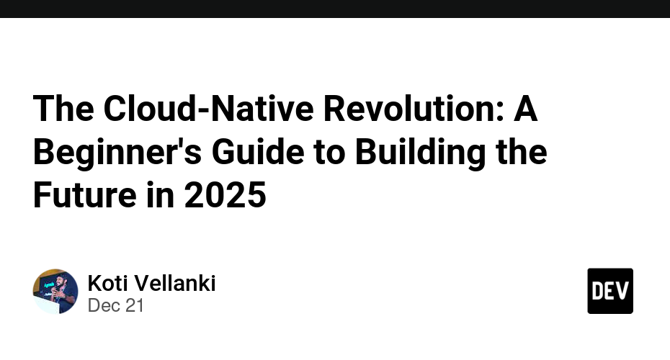Dev
4d
56

Image Credit: Dev
The Cloud-Native Revolution: A Beginner's Guide to Building the Future in 2025
- Cloud-native is designing, building, and running applications that fully embrace the capabilities of cloud computing. It is scalable, resilient, and agile. Companies like Netflix, Uber, and Spotify have already adopted it and use microservices, Kubernetes, containerization, and CI/CD practices. Cloud-native systems allow businesses to scale dynamically, recover automatically, deploy updates without downtime, and optimize resource usage by using pay-as-you-go models. It has become a necessity for businesses to stay competitive in today's digital-first world. To get started, learn the basics of cloud computing, master containers and Kubernetes, build CI/CD pipelines, implement observability, adopt a DevOps culture, shift left security, use Infrastructure as Code, and focus on resilience.
- Examples of cloud-native in action include Netflix, which handles over 200 million users worldwide, Uber which relies on cloud-native principles to match millions of drivers and riders in real-time, and Spotify which uses Kubernetes to manage its music streaming services. TO work on real-world projects, build cloud-native applications and deploy them on the public cloud.
- The pillars of cloud-native are Containers, Kubernetes, Microservices, CI/CD, and Observability. Containers are like lunchboxes for your applications, Kubernetes is like a traffic controller for containers, microservices are breaking apps into smaller, independent services, CI/CD is automating code integration and deployment, and Observability is monitoring system health and performance.
- To get started with cloud-native, understand IaaS, PaaS, and SaaS, explore cloud platforms, install Docker and create containers, master Kubernetes, build a CI/CD pipeline, set up monitoring tools, and create dashboards.
- Best practices for cloud-native development include adopting a DevOps culture, shifting left security, using Infrastructure as Code, focusing on resilience, and staying updated with CNCF.
Read Full Article
3 Likes
For uninterrupted reading, download the app